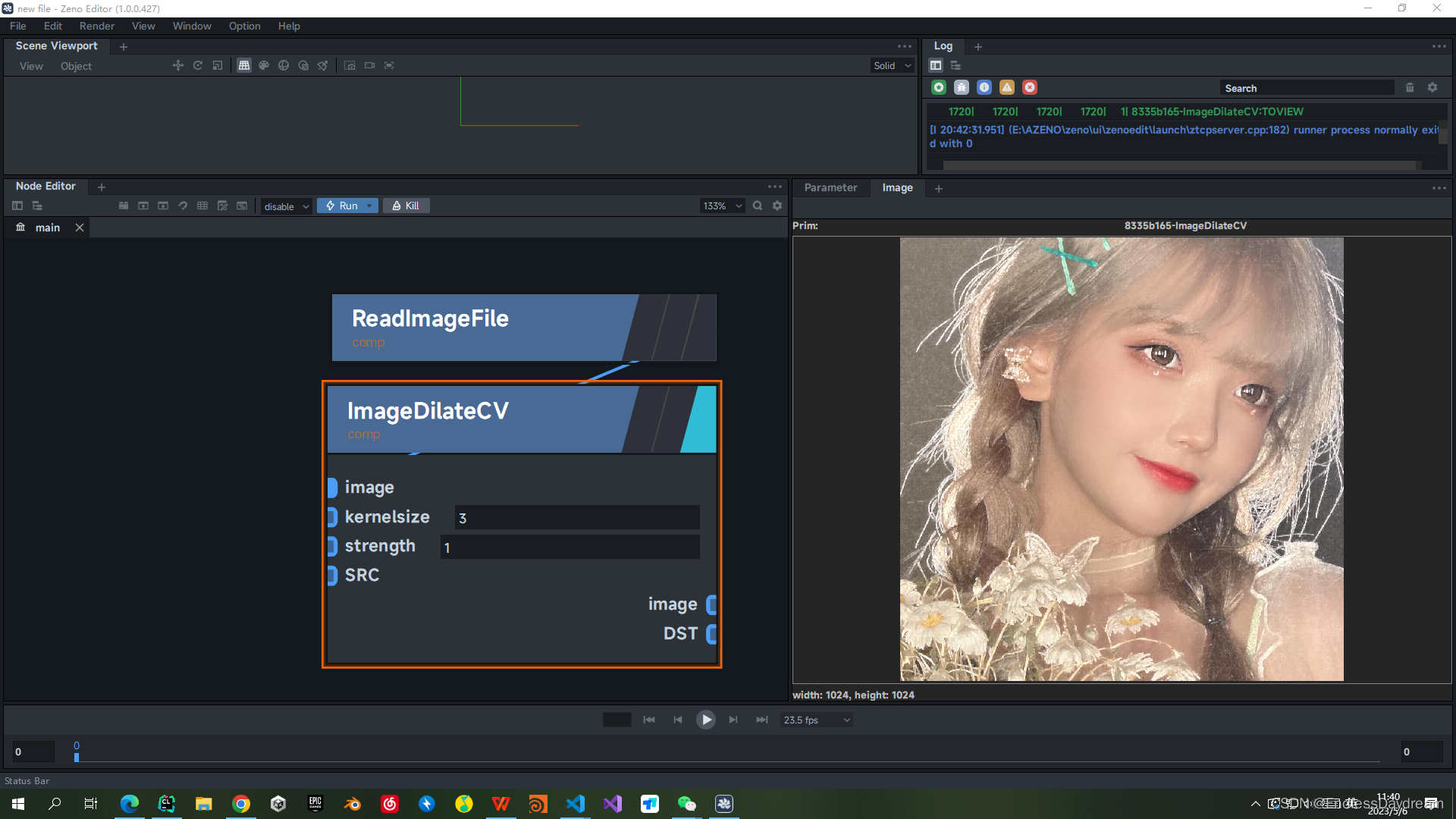ImageDilateCV





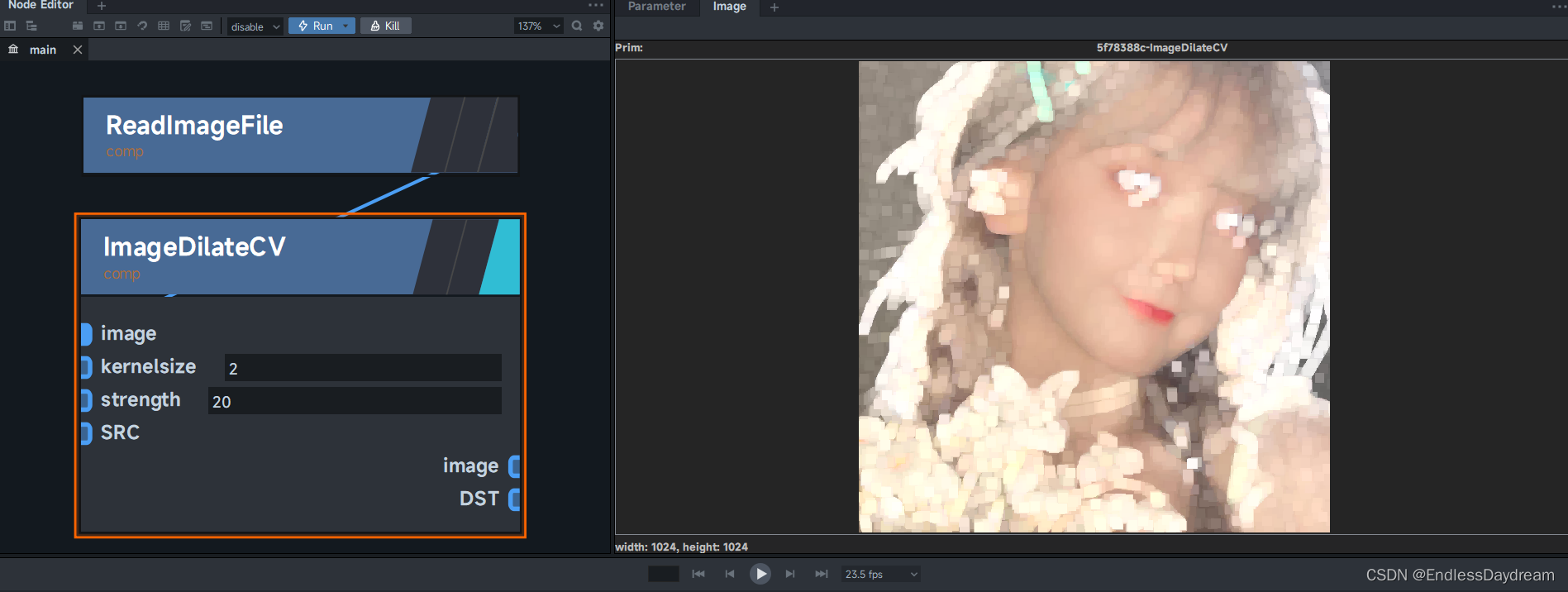


// 图像膨胀函数
void dilateImage(cv::Mat& src, cv::Mat& dst, int kernelSize, float dilateStrength) {
// 定义结构元素
cv::Mat kernel = getStructuringElement(cv::MORPH_RECT, cv::Size(kernelSize, kernelSize));
// 进行膨胀操作
cv::dilate(src, dst, kernel, cv::Point(-1, -1), dilateStrength);
}
struct ImageDilateCV: INode {
void apply() override {
std::shared_ptr<PrimitiveObject> image = get_input<PrimitiveObject>("image");
int kernelsize = get_input2<int>("kernelsize");
int strength = get_input2<int>("strength");
auto &ud = image->userData();
int w = ud.get2<int>("w");
int h = ud.get2<int>("h");
cv::Mat imagecvin(h, w, CV_32FC3);
cv::Mat imagecvout(h, w, CV_32FC3);
for (int i = 0; i < h; i++) {
for (int j = 0; j < w; j++) {
vec3f rgb = image->verts[i * w + j];
imagecvin.at<cv::Vec3f>(i, j) = {rgb[0], rgb[1], rgb[2]};
}
}
const int kernelSize = 3;
dilateImage(imagecvin, imagecvout, kernelsize, strength);
for (int i = 0; i < h; i++) {
for (int j = 0; j < w; j++) {
cv::Vec3f rgb = imagecvout.at<cv::Vec3f>(i, j);
image->verts[i * w + j] = {rgb[0], rgb[1], rgb[2]};
}
}
set_output("image", image);
}
};
ZENDEFNODE(ImageDilateCV, {
{
{"image"},
{"int", "kernelsize", "3"},
{"float", "strength", "1"},
},
{
{"image"},
},
{},
{"comp"},
});ImageErodeCV
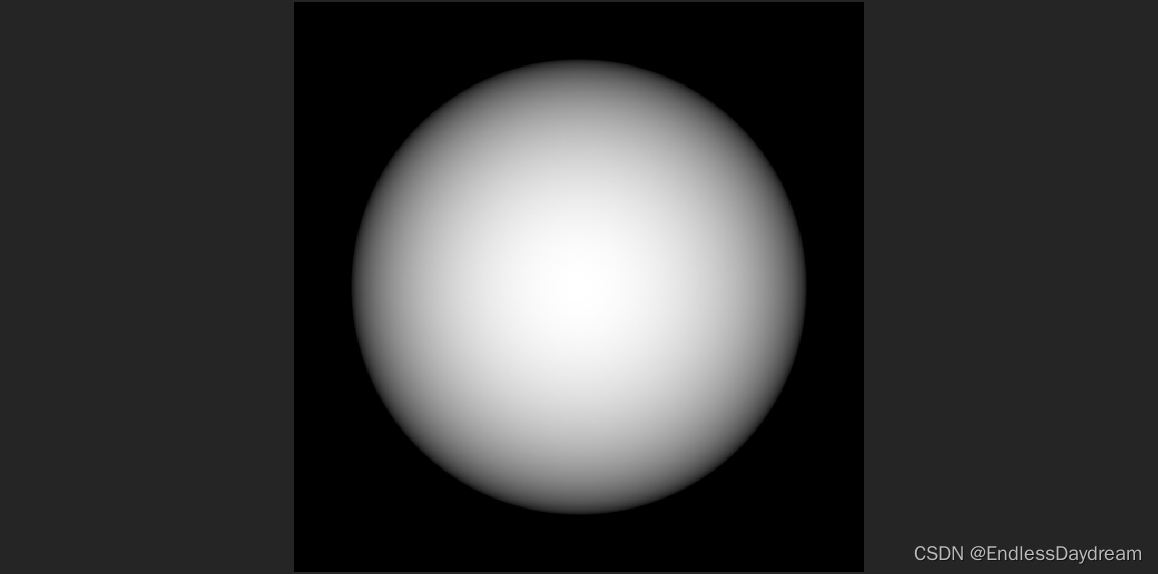

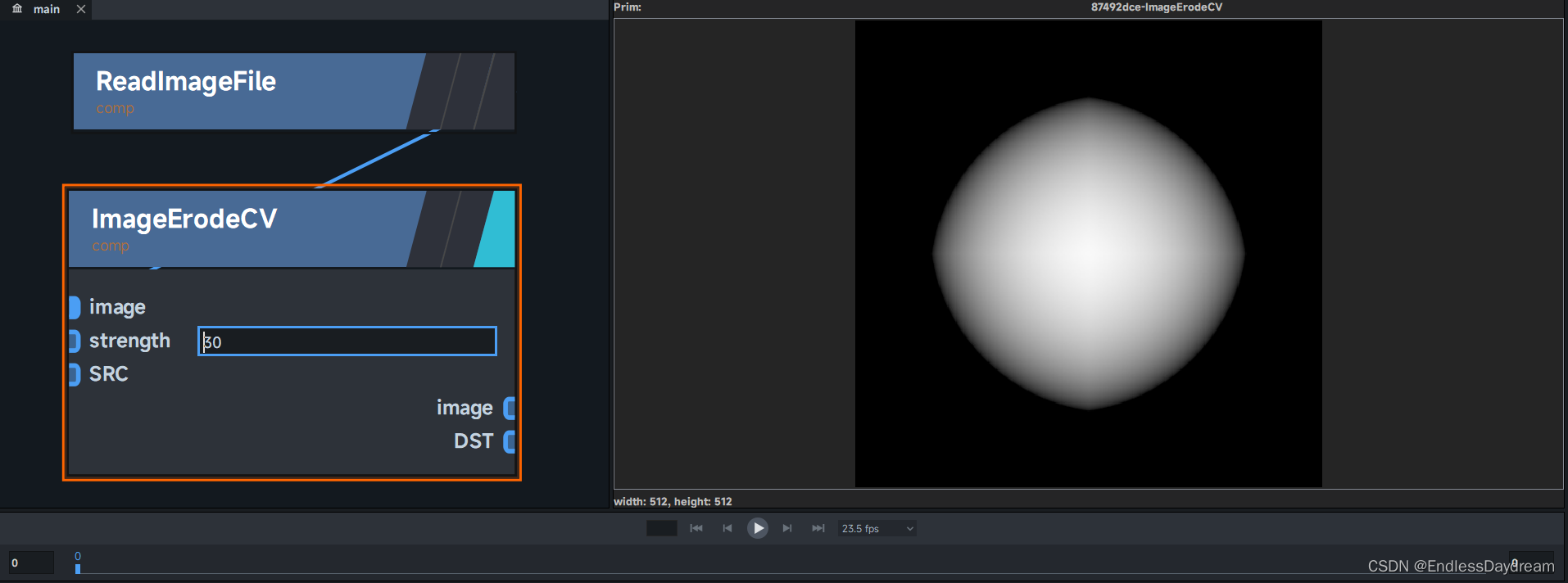
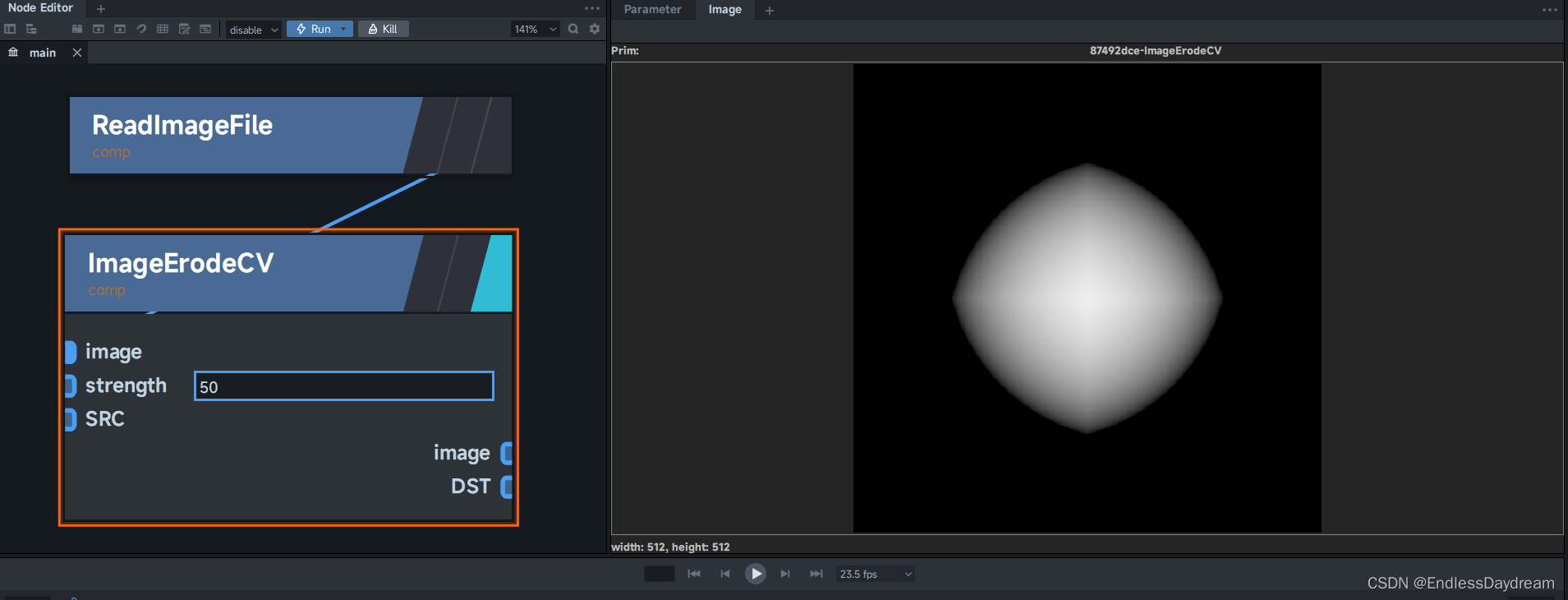
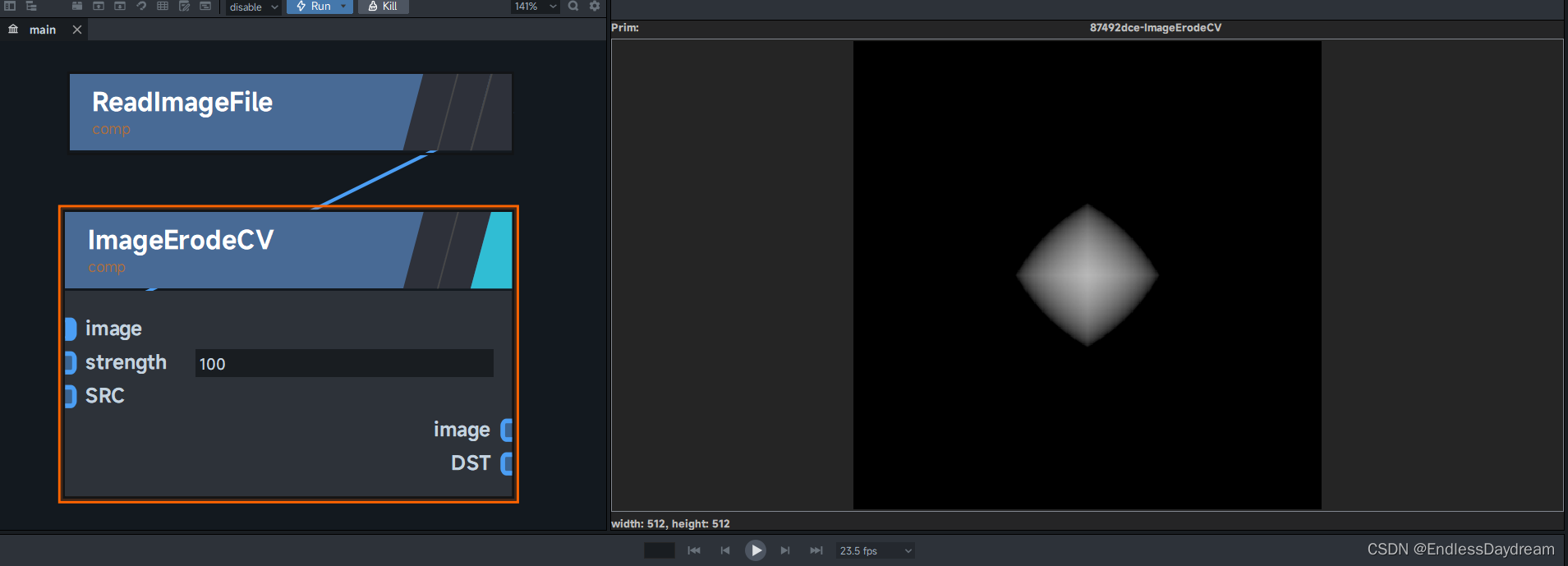
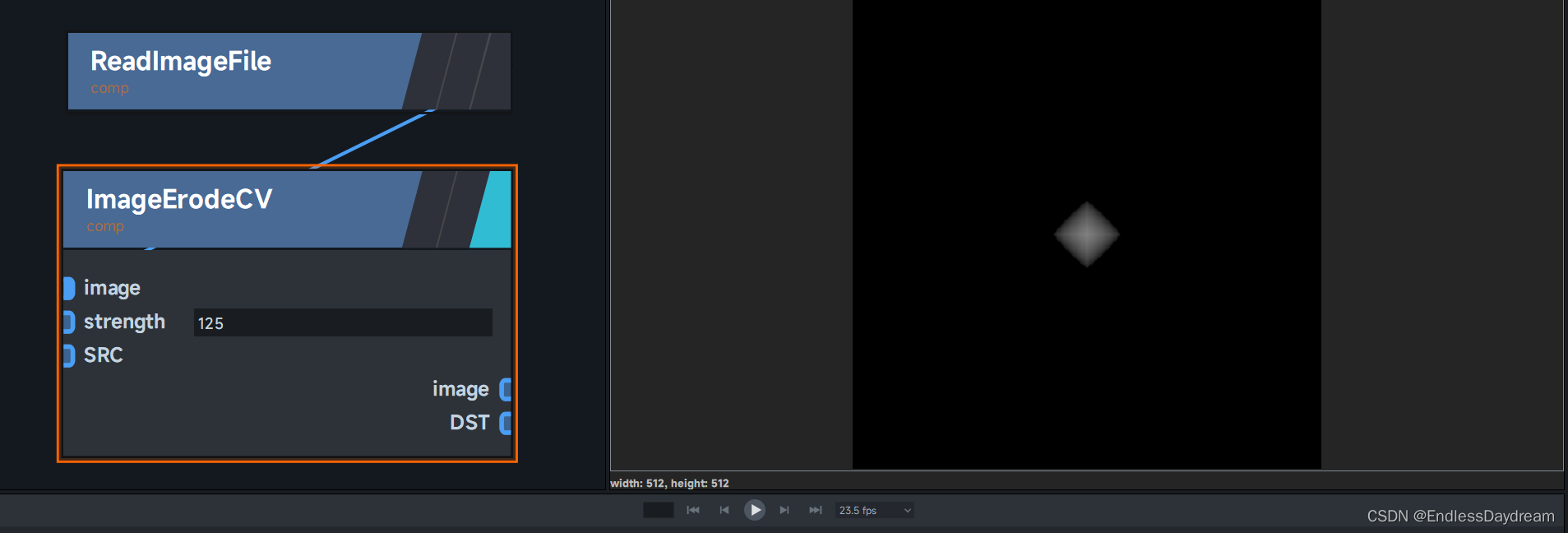


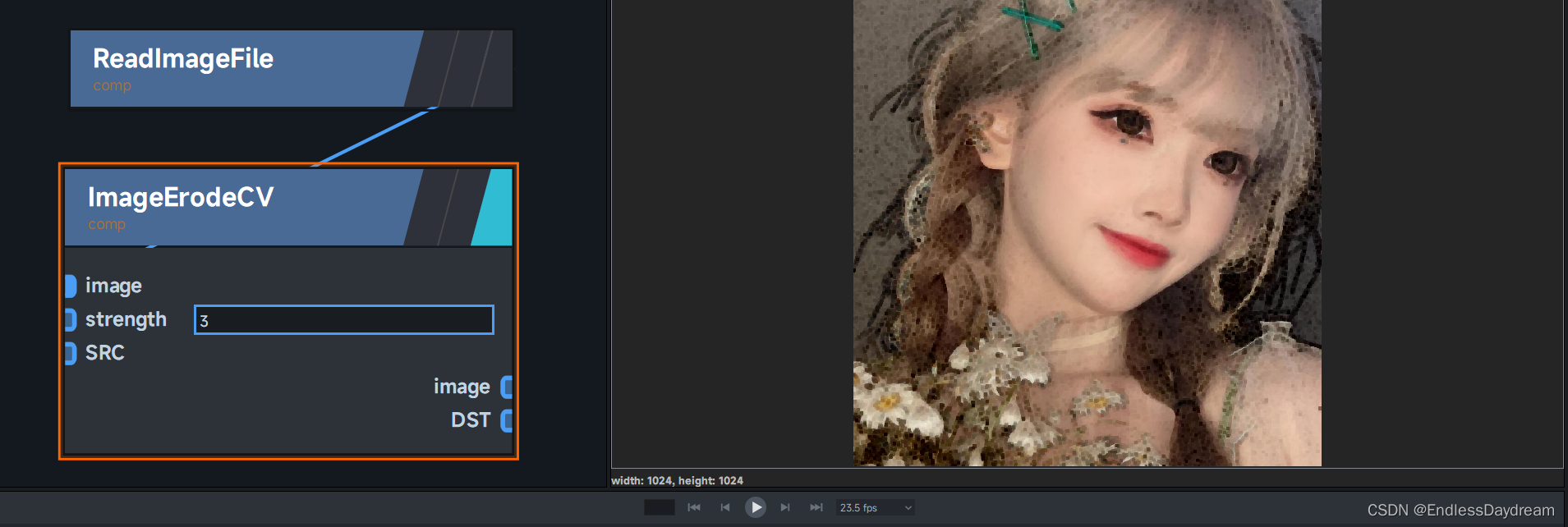


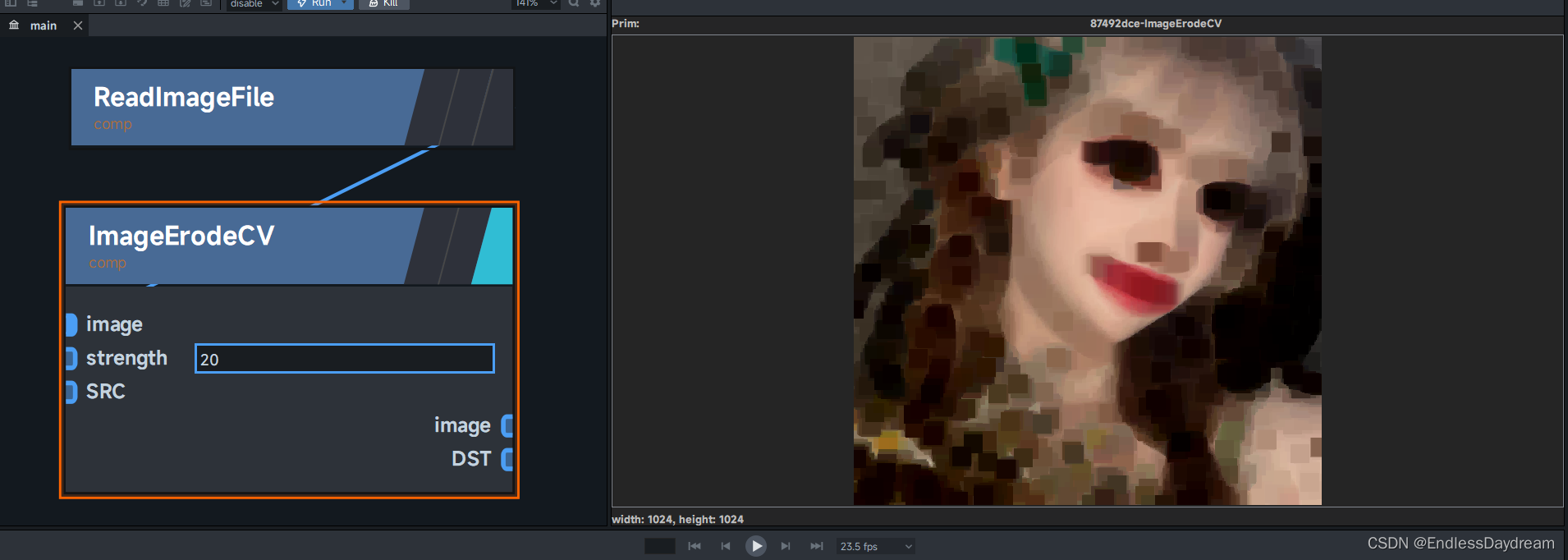
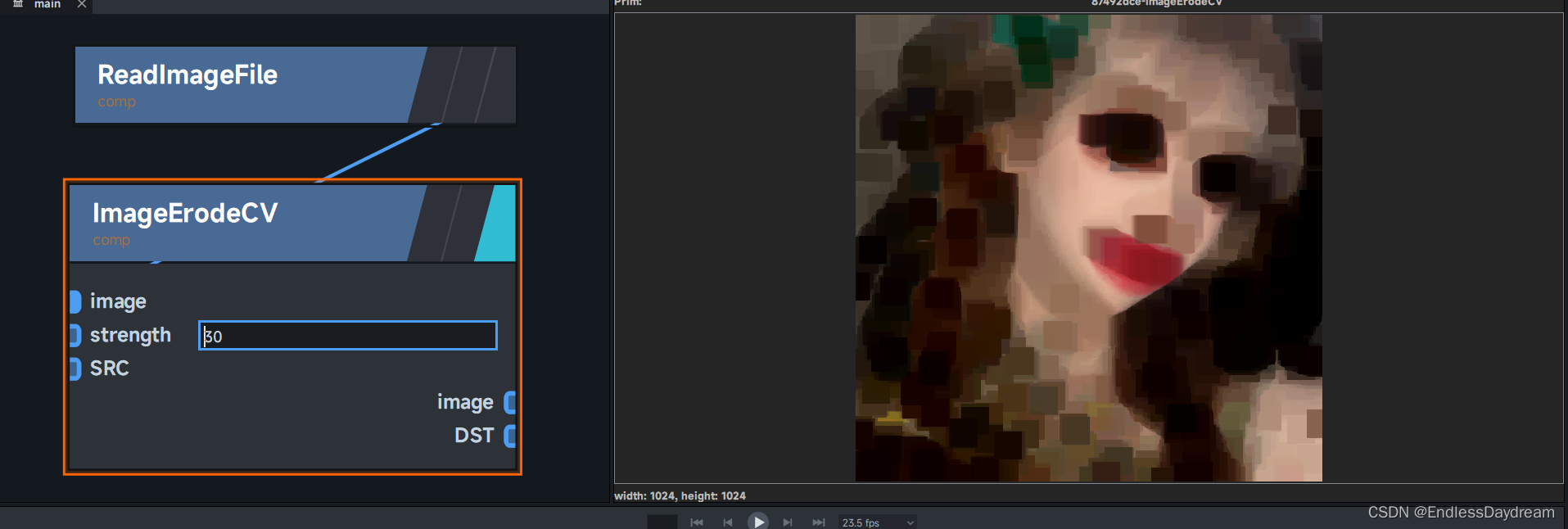







struct ImageErodeCV: INode {
void apply() override {
std::shared_ptr<PrimitiveObject> image = get_input<PrimitiveObject>("image");
int strength = get_input2<int>("strength");
auto &ud = image->userData();
int w = ud.get2<int>("w");
int h = ud.get2<int>("h");
cv::Mat imagecvin(h, w, CV_32FC3);
cv::Mat imagecvout(h, w, CV_32FC3);
for (int i = 0; i < h; i++) {
for (int j = 0; j < w; j++) {
vec3f rgb = image->verts[i * w + j];
imagecvin.at<cv::Vec3f>(i, j) = {rgb[0], rgb[1], rgb[2]};
}
}
cv::Mat element = getStructuringElement(cv::MORPH_RECT, cv::Size(2 * strength + 1, 2 * strength + 1),
cv::Point(strength, strength));
cv::erode(imagecvin, imagecvout, element);
for (int i = 0; i < h; i++) {
for (int j = 0; j < w; j++) {
cv::Vec3f rgb = imagecvout.at<cv::Vec3f>(i, j);
image->verts[i * w + j] = {rgb[0], rgb[1], rgb[2]};
}
}
set_output("image", image);
}
};
ZENDEFNODE(ImageErodeCV, {
{
{"image"},
{"int", "strength", "1"},
},
{
{"image"},
},
{},
{"comp"},
});#include <iostream>
#include <vector>
#include <algorithm>
using namespace std;
// 膨胀操作函数
void dilate(vector<vector<int>>& image, int kernelSize, int strength) {
int height = image.size();
int width = image[0].size();
int halfKernelSize = kernelSize / 2;
// 创建膨胀核
vector<vector<int>> kernel(kernelSize, vector<int>(kernelSize, 1));
// 对图像进行膨胀操作
for (int i = halfKernelSize; i < height - halfKernelSize; i++) {
for (int j = halfKernelSize; j < width - halfKernelSize; j++) {
int maxValue = 0;
for (int m = -halfKernelSize; m <= halfKernelSize; m++) {
for (int n = -halfKernelSize; n <= halfKernelSize; n++) {
maxValue = max(maxValue, image[i + m][j + n]);
}
}
image[i][j] = min(image[i][j] + strength * maxValue, 255);
}
}
}
int main() {
// 读入图像数据
vector<vector<int>> image = {
{ 100, 120, 130, 140, 120 },
{ 90, 110, 120, 130, 110 },
{ 80, 100, 110, 120, 100 },
{ 70, 90, 100, 110, 90 },
{ 60, 80, 90, 100, 80 }
};
// 对图像进行膨胀操作
int kernelSize = 3; // 膨胀核大小
int strength = 1; // 膨胀强度
dilate(image, kernelSize, strength);
// 输出膨胀后的图像
for (auto row : image) {
for (auto pixel : row) {
cout << pixel << " ";
}
cout << endl;
}
return 0;
}
#include <iostream>
#include <fstream>
using namespace std;
const int kernelSize = 3;
const int kernel[kernelSize][kernelSize] = {
{1, 1, 1},
{1, 1, 1},
{1, 1, 1}
};
int main()
{
ifstream fin("input.bmp", ios::binary);
ofstream fout("output.bmp", ios::binary);
// 读取 BMP 文件头和信息头等信息
// ...
// 读取图像数据
unsigned char *imageData = new unsigned char[width * height * 3];
// ...
// 定义输出图像数据
unsigned char *outputData = new unsigned char[width * height * 3];
// 定义目标区域的左上角和右下角坐标
int x1 = 100, y1 = 100;
int x2 = 200, y2 = 200;
// 对于目标区域中的每个像素进行膨胀操作
for (int y = y1 + kernelSize / 2; y < y2 - kernelSize / 2; y++) {
for (int x = x1 + kernelSize / 2; x < x2 - kernelSize / 2; x++) {
int maxValue = 0;
for (int ky = -kernelSize / 2; ky <= kernelSize / 2; ky++) {
for (int kx = -kernelSize / 2; kx <= kernelSize / 2; kx++) {
int px = x + kx;
int py = y + ky;
int value = imageData[(py * width + px) * 3];
if (value > maxValue) {
maxValue = value;
}
}
}
outputData[(y * width + x) * 3] = maxValue;
outputData[(y * width + x) * 3 + 1] = maxValue;
outputData[(y * width + x) * 3 + 2] = maxValue;
}
}
// 将输出图像数据写入文件
// ...
// 释放内存
delete[] imageData;
delete[] outputData;
return 0;
}
